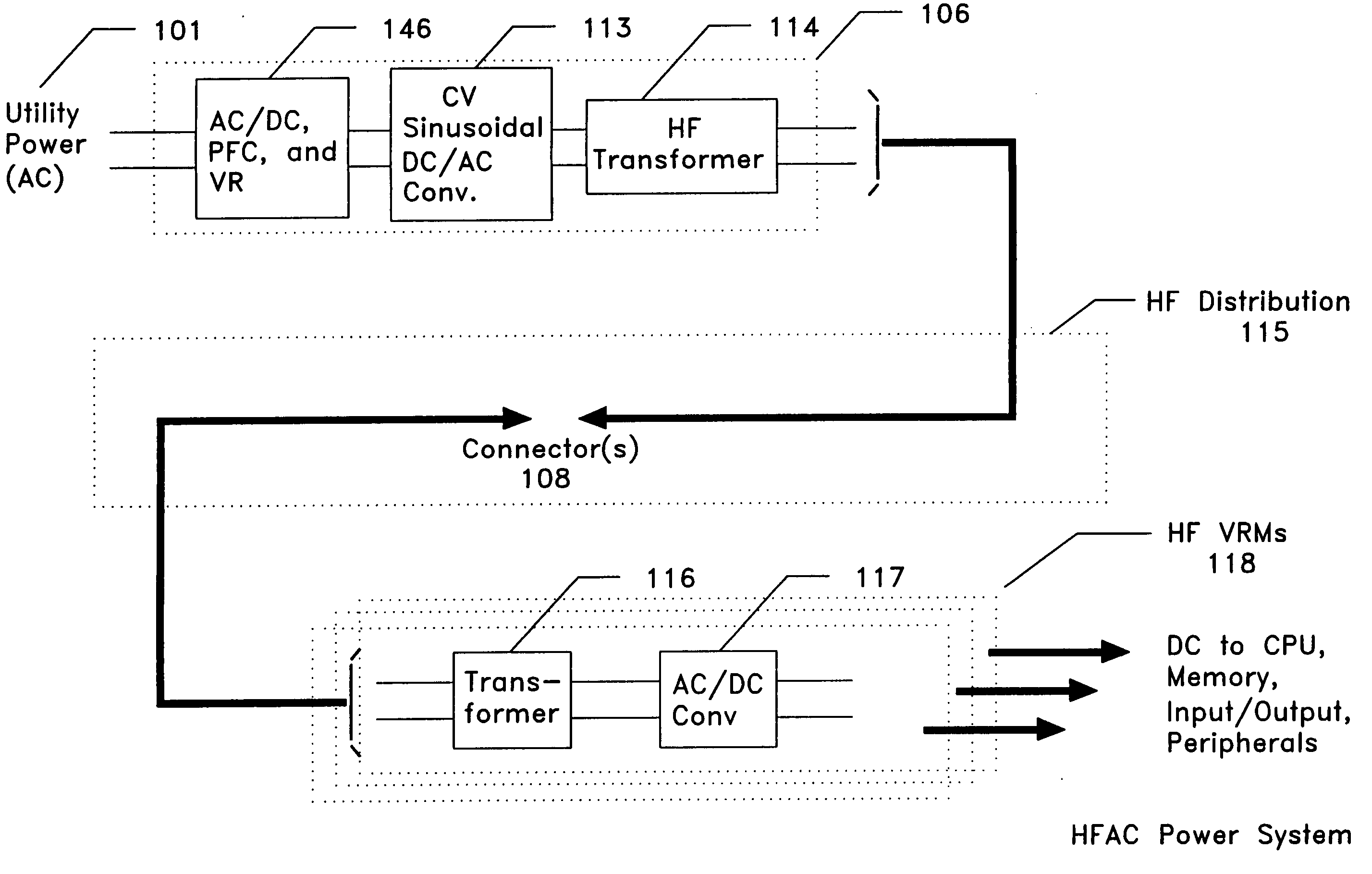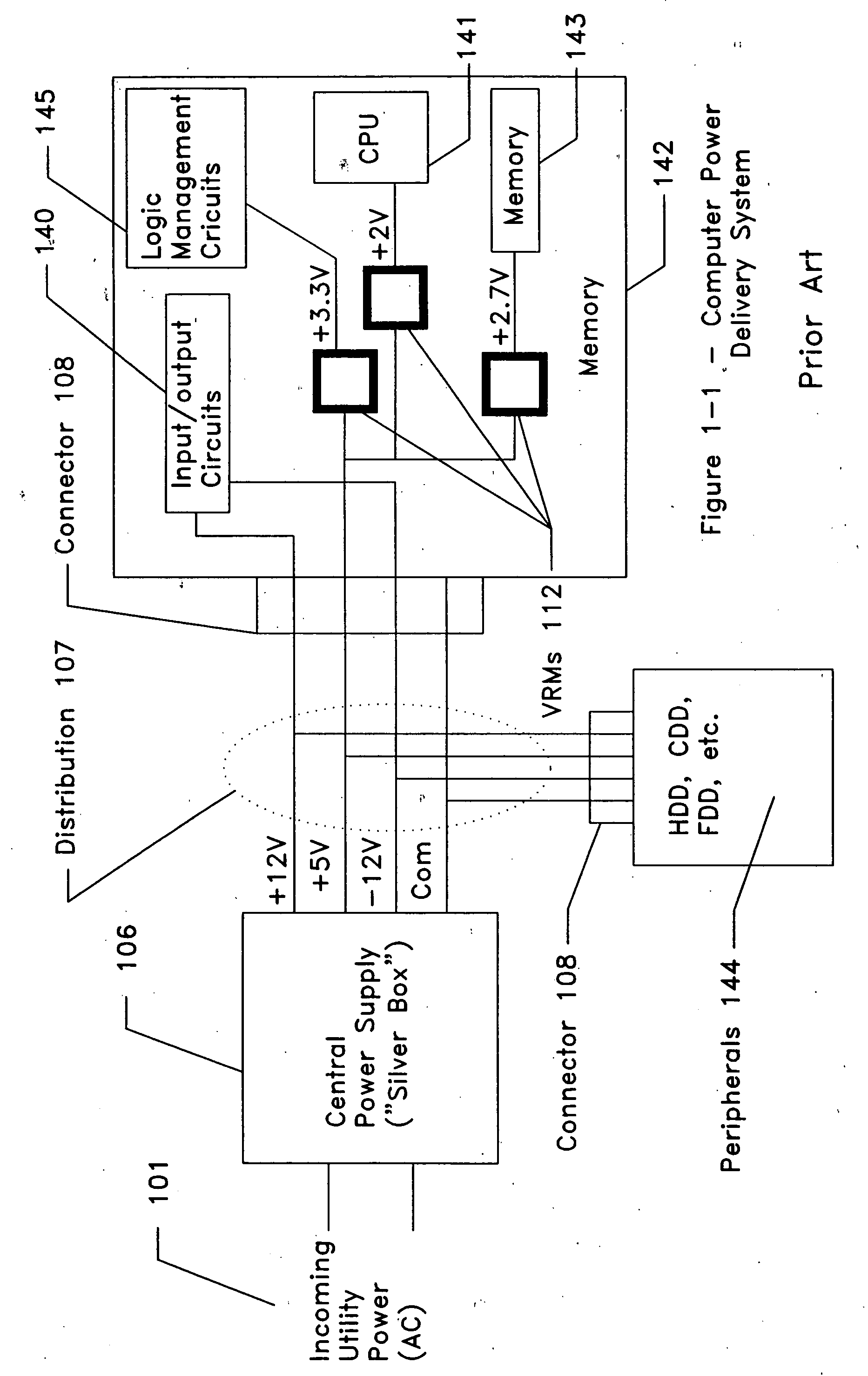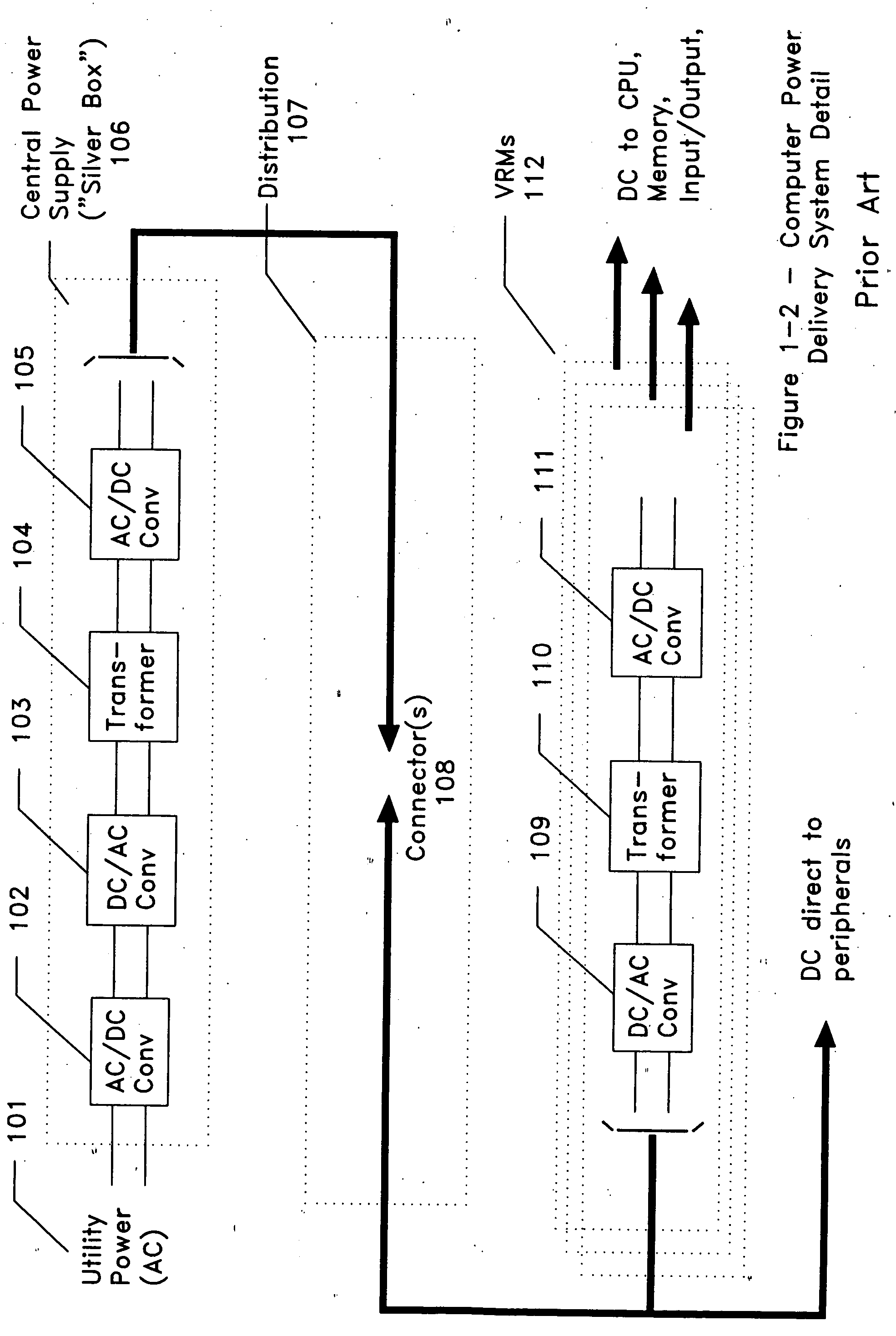Rapid current demand microprocessor supply circuit
a microprocessor and supply circuit technology, applied in the direction of liquid/fluent solid measurement, process and machine control, emergency power supply arrangements, etc., can solve the problems of slow operation voltage of the microprocessor, abrupt change of the current drawn by the processor, and limitations of the removal of heat, so as to reduce the magnetic field, reduce the storage and powering medium, and the effect of fast respons
- Summary
- Abstract
- Description
- Claims
- Application Information
AI Technical Summary
Benefits of technology
Problems solved by technology
Method used
Image
Examples
Embodiment Construction
[0074] As can be easily understood, the basic concepts of the present invention may be embodied in a variety of ways. These concepts involve both processes or methods as well as devices to or which accomplish such. In addition, while some specific circuitry is disclosed, it should be understood that these not only accomplish certain methods but also can be varied in a number of ways. Importantly, as to all of the foregoing, all of these facets should be understood to be encompassed by this disclosure.
[0075] In the prior art, the central power supply provides several standard voltages for use by the electronics. Referring to FIG. 1-1, utility power (101), typically at 110 or 220 volt nominal AC power alternating at 50 or 60 cycles, is converted by power supply (106) to standard DC voltages, usually .+-.12 and +5 volts. These voltages are brought out of the power supply on flying leads, which form a kind of distribution system (107), terminated in one or more connectors (108) These st...
PUM
 Login to View More
Login to View More Abstract
Description
Claims
Application Information
 Login to View More
Login to View More - R&D
- Intellectual Property
- Life Sciences
- Materials
- Tech Scout
- Unparalleled Data Quality
- Higher Quality Content
- 60% Fewer Hallucinations
Browse by: Latest US Patents, China's latest patents, Technical Efficacy Thesaurus, Application Domain, Technology Topic, Popular Technical Reports.
© 2025 PatSnap. All rights reserved.Legal|Privacy policy|Modern Slavery Act Transparency Statement|Sitemap|About US| Contact US: help@patsnap.com



